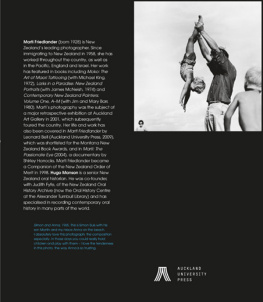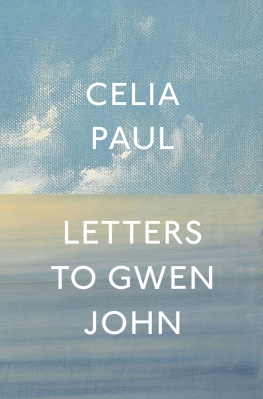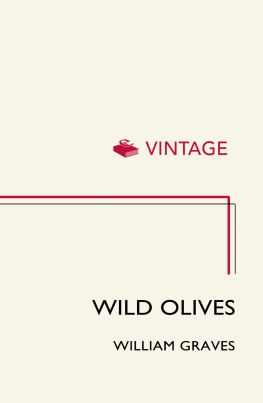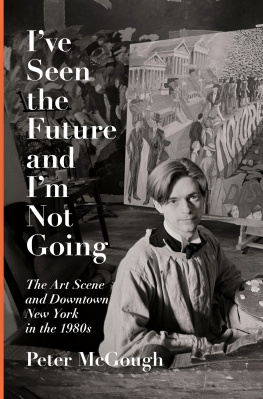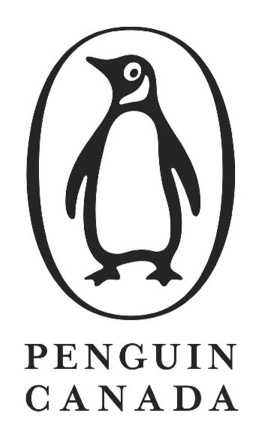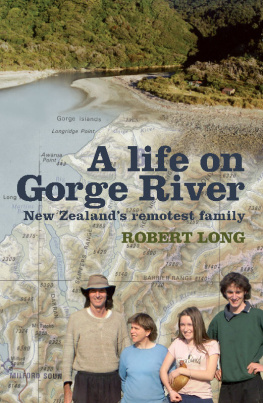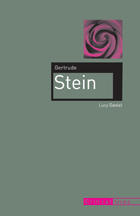

to Shirley
for help & inspiration
First published 2001
Reprinted 2002
Auckland University Press
University of Auckland
Private Bag 92019
Auckland
New Zealand
http://www.auckland.ac.nz/aup
Roger Horrocks, 2001
eISBN 978 1 86940 523 6
Publication is assisted by 
This book is copyright. Apart from fair dealing for the purpose of private study, research, criticism or review, as permitted under the Copyright Act, no part may be reproduced by any process without prior permission of the publisher.
Cover design by Sarah Maxey
Front cover photograph: Len Lye in Sydney, c.1925,
photographed by Mary Brown. Courtesy Len Lye Foundation.
Back cover: Strips of direct film from Colour Cry (1953).
Courtesy Len Lye Foundation.
contents
(New Zealand, Australia, Samoa)
(England)
(USA, New Zealand)
introduction
Len Lye stood out even within the colourful worlds of art and film for his singularity. In the words of painter Julian Trevelyan, He was like a man from Mars who saw everything from a different viewpoint, and it was this that made him original. Lyes exuberance, his unique taste in clothes, his quirky turn of phrase, and his free-wheeling life style made him a legendary figure among fellow artists and film-makers. These were outward signs of the deep and uncompromising commitment to experiment and risk-taking in the arts that sustained him for more than 60 years as he applied his innovative approach to film, sculpture, painting, photography and writing.
Lye was a member of many important art groups, starting with the Seven and Five Society in London in the 1920s and the international Surrealist movement in the 1930s. In the same decade he was part of John Griersons GPO Film Unit, and contributed as a writer and artist to notable avant-garde magazines and publishing ventures. Moving to New York he became involved with the Abstract Expressionist painters and the underground film-makers of the 1950s. In the following decade he played an important role in the international upsurge in kinetic art. He was never tempted to slow down and just a few months before his death at the age of 78 he completed a remarkable series of paintings and one of his most radical films.
As the first account to bring together the many facets of Lyes eventful and singular life, this biography suggests that his personality was as remarkable as his art. Ann Lye (his wife) once said, Lens greatest creation was himself, and the poet Alastair Reid felt similarly that his day to day life was some of his best work, making him the least boring person who ever existed. As I researched the biography I found that the mention of Lyes name almost always produced a warm welcome and a rush of anecdotes about (in the words of sculptor Kenneth Snelson) this crazy, excited and exciting guy. Photographer Barbara Ker-Seymer spoke for many of his friends when she warned me it was an impossible challenge to capture such a personality on paper.
I was also drawn to attempt the biography by the unusual breadth of Lyes journey through twentieth century art. He was one of the rare examples of an experimental artist able to appeal not only to artists and critics but also to a broad public. Today his films are still screened regularly on MTV Europe and at rock concerts. His kinetic sculptures have attracted record crowds in a way that is rare for abstract art, and while viewers may not feel they understand his work they are fascinated and stirred by it. Lyes art has often been surrounded by controversy from the noisy mixture of cheering and booing that greeted his first direct films to the debates today about the setting-up of his giant sculptures in public places. Such polarised responses have at times helped to make the artist prominent in popular culture as well as high culture.
This biography differs markedly from previous accounts of his life because they have tended to rely on a few sources. Though reticent as a young man, Lye became a lively interview subject in his later years and most critics and curators were happy to use his colourful anecdotes without bothering to seek independent confirmation. Its not that the artist was trying to deceive anyone but that his mind worked in a particular, creative way he liked dramatic stories, he disliked boring details, he turned memories into myths. His anecdotes conveyed the spirit and mood of his experiences but streamlined the facts. Many artists have indulged in personal myth-making but Lye was an extreme case, particularly in his later years. When asked to date an event or painting he would offer an answer that was as confident as it was unreliable. It is sobering to observe how many essays and catalogues have continued to recycle the same answers as facts.
The present biography is the result of research spread over two decades in search of independent sources and reliable evidence. I should add that the artist gave his own blessing to my project and encouraged frankness (he was never comfortable with an overload of lauding). As my research developed I was pleased to find that what I uncovered the details he had forgotten or transformed were just as interesting in their own way as his streamlined memories. In the late 1970s and through the 1980s I was fortunate to be able to interview many members of Lyes generation who have since died including the artist himself, his brother Philip, his first wife Jane and second wife Ann, friends who had grown up with him in New Zealand, and artists and technicians who had worked with him in England. Jack Ellitt, now (in 2000) living in Australia at the age of 97, is one of the few surviving colleagues from those early years.
I would describe the method I have adopted as similar to a documentary film, in particular an over the shoulder approach that sticks as close as possible to its subject. I have often used Lyes own words complemented by interviews with the people who were round him. I have tried to keep my own commentary to a minimum but have not hesitated to add contextual information where it was needed. In seeking the immediacy of an observational documentary I have allowed first-hand accounts to carry much of the narrative. Direct quotations tend to interest me more than paraphrase because of what they reveal about personalities, contexts, and contemporary discourses. Together with the oral history I gathered through interviews, I was fortunate to have at my disposal a rich archive of Lyes own writings in which he put on record the personal flavour and meaning of many of his experiences, often as a case study to illustrate his theories of the old brain. It took me years to find my way round this chaotic collection of fragments and drafts but ultimately it proved a goldmine. My new brain biography (with its independent sorting of facts) provided a structure that could carry the texture of the artists old brain descriptions.
I was pleased when a reader said the book felt at times more like an autobiography than a biography. Some readers may, however, be disappointed that I have not done more of the work for them by supplying more generalisations and judgements. Certainly I have formed a number of opinions but I am keeping most of that material for a later, more technical book. I decided that writing an accessible biography was the first priority because of the breadth of interest in Lye (not only among specialists) and the fact that discussions of the man and his career have almost always been fragmentary and under-researched. My task was to fill in the gaps (or as many as possible) and to present his personality in a way that was more rounded, more coherent, and more immediate.
Next page

